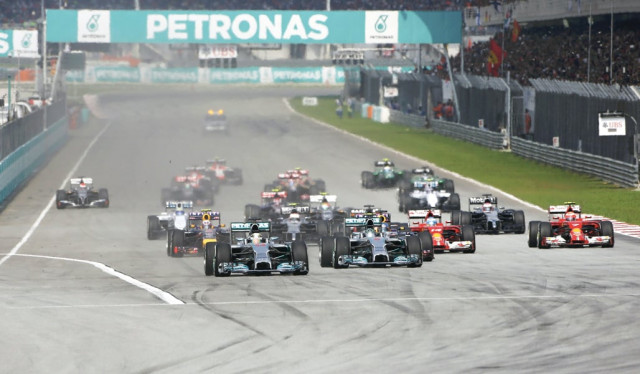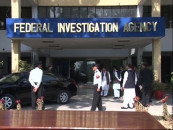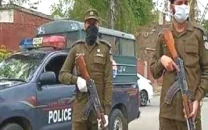Formula One: Titans on speed
On the tracks of one of the most glamorous sporting events.

On the tracks of one of the most glamorous sporting events. PHOTOS COURTESY AFP, REUTERS AND TOURISM MALAYSIA
Ecstasy on wheels
Formula One (F1) — with formula referring to a set of rules that each participant’s car must meet — is the highest class of single-seater auto racing authorised by the Fédération Internationale de l’Automobile (FIA). The F1 season comprises a series of races, held across the world on purpose-built circuits and public roads, known as the Grand Prix. The results of each race are tabulated using a points system to evaluate two annual World Championships, one for the drivers and the other for constructors. While the race is a combination of speed, control and tactic, cars reach a speed of over 300km/h, making the sport every petrolhead’s fantasy.

Even though the first Formula One Grand Prix race took place in 1906, it did not receive global acclaim until the later half of the 20th century. While Europe is the sport’s traditional base and hosts about half of each year’s races, the sport’s scope has expanded significantly during recent years. An increasing number of Grand Prix are now held at various locations across the world such as Singapore, China, Bahrain, Japan and the United States.
Action in Sepang – much more than a race
The second Grand Prix for the ongoing season took place in Sepang, Malaysia from March 28 to 30. The F1 season, which is renowned for its glitz and glamour did not disappoint with its non-stop action over the race weekend. Kuala Lumpur hosted a series of events from a grand gala dinner by the Malaysian prime minister to electric performances by big names such as Calvin Harris, Christina Aguilera and David Foster.

“Billions from around the world watch the coverage [of the race] and Malaysia is proud of successfully staging the event for the last 16 years,” says Hafiz Abdul Rehman, a motorsports enthusiast.
The atmosphere on race day was slightly subdued due to the tragic news of the missing flight MH370. However, the British racer Lewis Hamilton took the track in his shining Petronas Mercedes with such aggression that it left little room for the other drivers and fans to concentrate on anything else over the next two hours.

“Sepang is a good venue. It’s one of the better tracks but also challenging because of the heat,” says Damon Hill, the 1996 F1 World Champion.
Jubilant fans cheered from the stands as Hamilton dashed past World Champion Vettel to claim victory. Australian Grand Prix winner Rosberg followed him into the second slot, making it Mercedes’ first one-two in more than five decades.
As soon as Hamilton jumped out of his car, an ecstatic crew clad in whitish grey uniforms flocked to congratulate their hero. Thousands of adrenaline junkies also poured onto the tracks hoping to catch a closer glimpse of the speed gods who cheat death for the title.

High stake theatre
“Driving at 300km/h is like covering 100 metres in a second and that’s what the drivers do when they go for the kill in the final laps,” says Bruno Senna, nephew of the late legendary Brazilian driver, Ayrton Senna, on the eve of his first commentary stint at the F1. “Nothing can compare to that feeling, nothing much comes close either.”
Thirty-year old Senna drove for two different teams, Renault and Williams, in a three-year Formula One stretch from 2010 .to 2012, but is now pursuing other alternatives since he feels he can no longer win the F1 with the teams he represented. “I drive to win, and if there is no chance of winning, there is no point in competing,” he says. Of course the young Brazilian is always reminded of the legacy of his three-time world champion uncle and the pressure that comes with sharing the genes.

The adrenaline of victory, however, comes with a fair share of risks, even death in some instances, as in the case of Senna’s uncle, who was killed in an accident while leading the 1994 San Marino Grand Prix. Twenty-four F1 drivers lost their lives between 1954 and 1994 with the 1970s being the deadliest period in F1 history. Countless others such as the three-time world champion and one of the central characters of the 2013 thriller Rush, Niki Lauda, also suffered from life threatening injuries. The poker-faced Austrian racer suffered from severe burns to the face and head and inhaled toxic gases that damaged his lungs and blood, when his Ferrari swerved out of control, hit an embankment and burst into flames during a race in 1976. His return to the track six weeks later and superb performances until his retirement years later, elevated him to such superstar status that his appearance on the Sepang tracks drove the crowd into a wild frenzy.

The deadly trend of the 1970s called for a drastic change in safety standards. In 1976, the FIA made seatbelts mandatory, increased cockpit sizes, introduced standards for fire-resistant clothing and enforced a minimum driver evacuation time of five seconds. This was further enhanced in 2000 with the increase in load and crash test speeds, toughening of cockpit walls, higher cockpit padding and the introduction of devices providing extra protection to the driver’s neck and hands. The measures have proved successful and the last decade has been one of the least fatal in the race’s history. It was perhaps the protective gear and enhanced technology that saved the life of Fellipe Massa in 2009, also a participant at Sepang this year. Massa was struck by a suspension spring that had fallen from fellow racer’s vehicle, on a high-speed part of the track. Even though the Brazilian racer’s skull cracked and he underwent several surgeries, the consequences could have been far worse had he not been protected by his gear.

Apart from the danger to their lives, the drivers also have to deal with the intense heat in the cockpit of their cars where temperatures have been recorded to go up to 70 degrees. Some, like Force India’s Nico Hulkenberg, resort to unconventional measures like frozen boxers to keep themselves cool in the Sepang heat.
Silent engines, loud debate
The 2014 season has been labelled revolutionary in F1 history due to the introduction of low on noise, fuel-efficient engines — a stark contrast to the older roaring engines that produced ear-splitting sound that has even forced some fans to use earplugs. The new and ‘improved’ engines, however, have their fair share of supporters and critics.
While Hamilton and Co in the Mercedes team love the technology, Vettel is hardly amused. “The bars are better [louder] than an F1 car these days,” he says. Many fans are also of the same opinion. “I have been to F1 races in Bahrain and the noise level here is really low compared to the earlier races. I am losing interest,” says Rizlan, a Qatar-based fan.

But for Hill, noise is inconsequential when it comes to the bigger picture. “Producing noise is easier than producing quality,” he says. “ These new engines are amazing because they are performing at the same level but with only one-third fuel consumption.”
On the other side
The venues, engines and faces behind the wheels may change from season to season, but the adrenaline from the sport has remained constant. As the three racers pop open a bottle of champagne and spray each other with the gushing translucent bubbles, one can’t help but hope for these flashy roaring cars to complete 100 metres in a second on a Pakistani circuit one day. Senna was indeed right, there isn’t much that can beat this feeling.
Twenty-four F1 drivers lost their lives between 1954 and 1994 with the 1970s being the deadliest period in F1 history. Countless others such as the three-time world champion, Niki Lauda, also suffered from life threatening injuries
Published in The Express Tribune, Sunday Magazine, April 13th, 2014.



















COMMENTS
Comments are moderated and generally will be posted if they are on-topic and not abusive.
For more information, please see our Comments FAQ